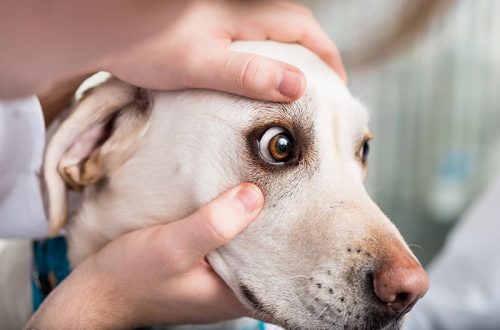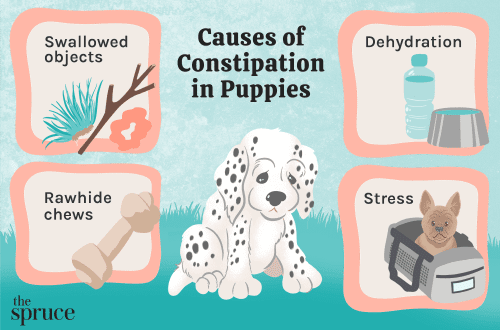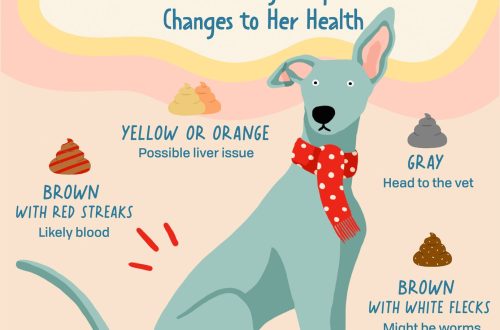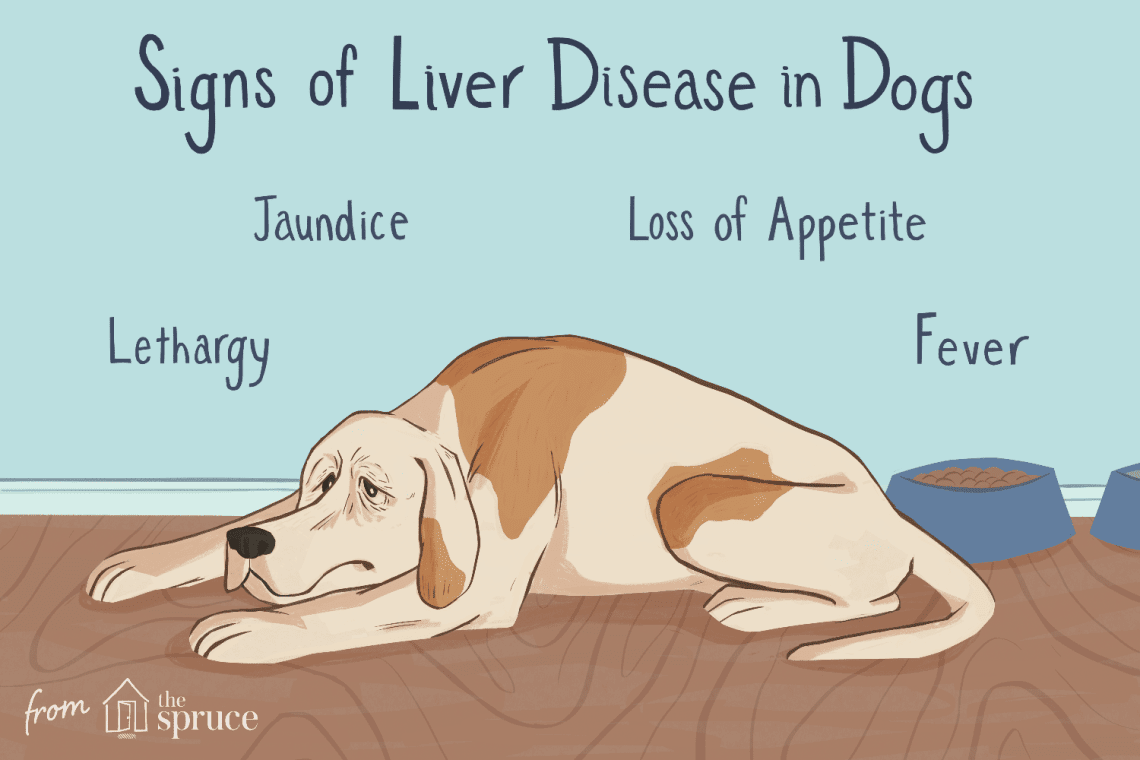
Liver disease in dogs
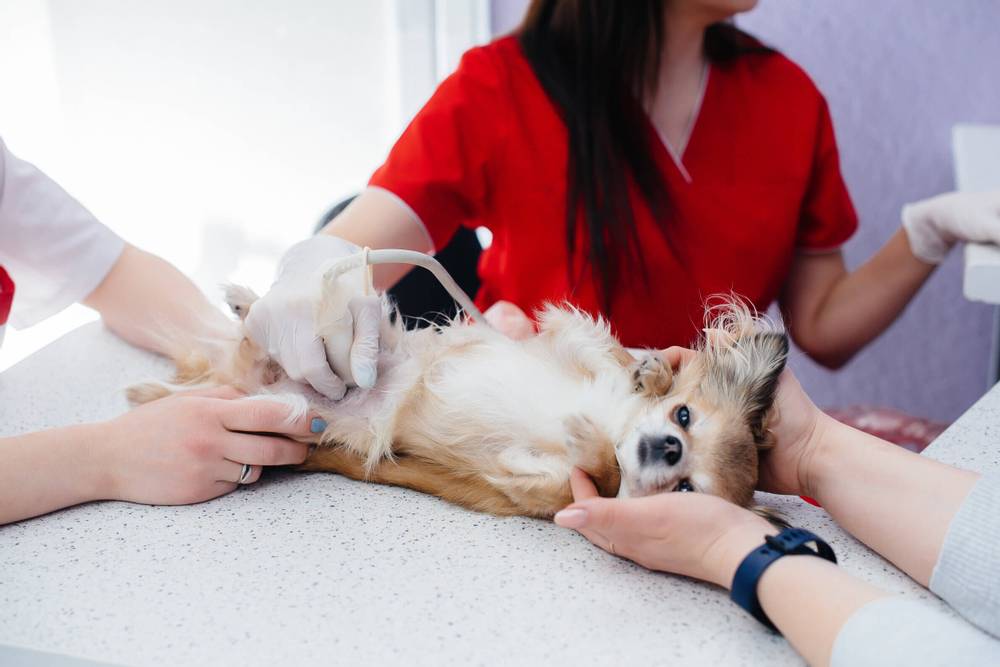
Here we will try to analyze the most basic types of violation of its work. Let’s talk about what symptoms to look out for and how to prevent liver disease in dogs.
Contents
Liver Disease in Dogs: Essentials
The liver is a complex organ that is involved in most processes in the body;
Diseases of the liver are as varied as its functions;
Symptoms of liver disease may be latent and non-specific;
Diagnosis includes a thorough examination, history taking, blood tests, and ultrasound. Sometimes additional methods are required (biopsy, histology);
Treatment of the liver should be comprehensive and should first of all be directed to the cause of the disease;
Prevention includes proper nutrition, timely preventive measures (vaccination, treatment for parasites), clinical examination (periodic examinations by a doctor).
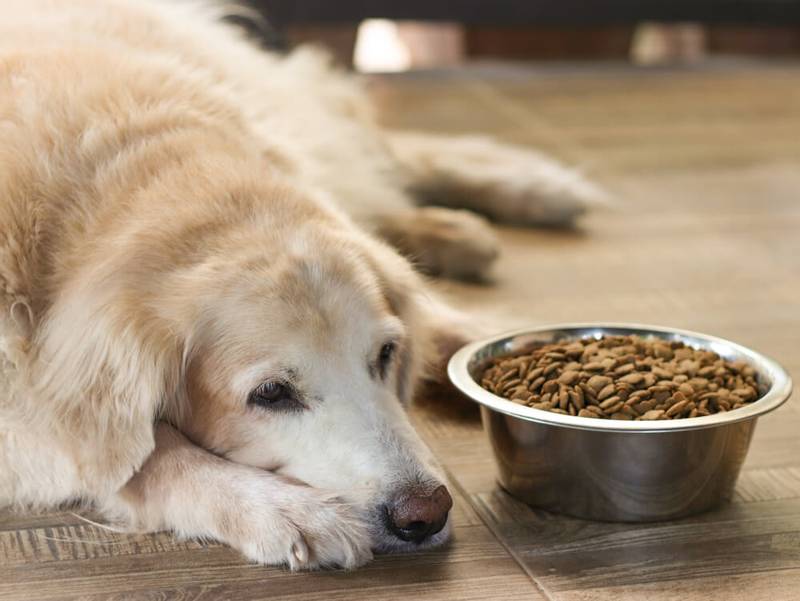
Classification of diseases
The liver performs many complex functions, which determines the variety of pathophysiological disorders that manifest themselves in the disease of this organ.
Liver disease in dogs can be divided into three broad groups.
Inflammatory diseases. These are acute or chronic liver diseases that occur in response to damage or the action of a pathogen (infection, toxins). They are respectively divided into:
Infectious. Bacterial (leptospirosis, abscess), viral (infectious hepatitis of dogs) and parasitic (ascaris, toxocara);
Non-infectious. Chronic hepatitis, cirrhosis, fibrosis caused by toxins and drugs, autoimmune processes.
Non-inflammatory diseases, they are also degenerative (degenerates – deteriorate, degenerate). They include:
Vacuolar hepatopathy (pathology of the liver at the cellular level). Lipidosis (fatty liver), amyloidosis (deposition of protein-carbohydrate components in liver cells), accumulation diseases of copper, vitamin A, vitamin D, hepato-skin syndrome, etc.;
Anomalies of the blood vessels. Congenital portocal anastomoses, shunts, portal vein hypoplasia, intrahepatic fistula, etc.;
Tumors / neoplasms (primary or metastasis).
Diseases of the biliary tract:
Cholestasis – blockage of the bile ducts;
Cholangitis – inflammation of the bile ducts;
Cholecystitis is inflammation of the gallbladder wall.
Symptoms of liver disease in dogs
The liver has a huge reserve of power and a huge potential for regeneration. Therefore, diseases appear clinically only after these reserves are exhausted. Often, the symptoms of liver problems in a dog can be subtle, so you should be especially careful to monitor any deviations in the behavior of the pet.
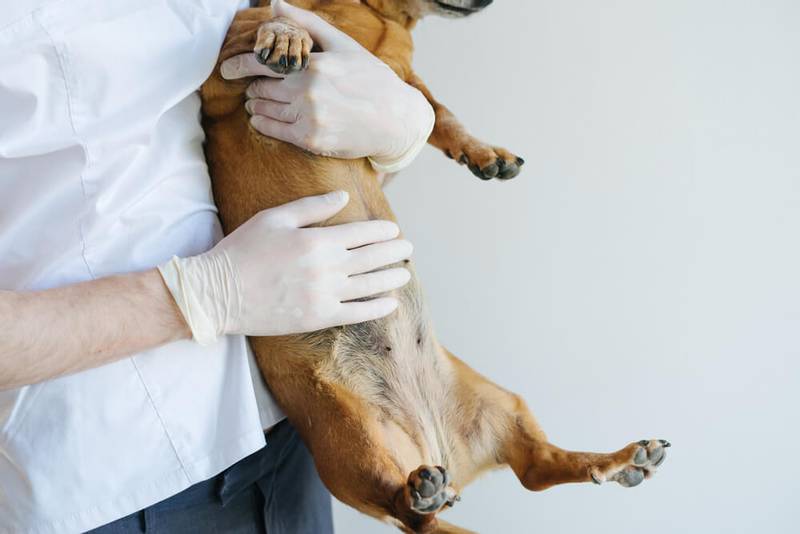
Early symptoms and signs of liver disease in dogs:
Decreased appetite or refusal to eat;
Decrease in body weight;
Drowsiness, lethargy, refusal to play;
Vomit. It can be either acute (several times a day) or intermittent (for example, once a week);
Diarrhea;
Polydipsia / polyuria – increased thirst and increased urine volume;
If a dog has liver pain, he may show the following symptoms: squealing when picked up, taking unnatural postures, with great care to perform previously familiar movements.
Severe liver failure:
Ictericity – yellowness of the mucous membranes, sclera, skin. Yellow-orange color can appear in urine and in blood serum when taking a sample;
Ascites is an accumulation of free fluid in the abdominal cavity. Outwardly, it can manifest itself as an increase in the volume of the abdomen;
Hepatic encephalopathy – neurological disorders against the background of intoxication. It can manifest itself in the form of impaired coordination, fainting, convulsions, etc .;
Coagulopathy is a bleeding disorder. May present as excessive bleeding on blood sampling, blood in urine, feces, vomit, mucosal haemorrhages.
Obstruction of the bile duct:
Pale (acholic) feces. The fact is that the substance stercobilin stains the brown color of the feces. It is found in bile, and if bile is not formed or is not excreted in sufficient quantities, the color of the stool will be much lighter or even white.
Diagnostics
Diagnosis of liver diseases in dogs should be comprehensive. The first step is to take a thorough history and examination. Most of the symptoms listed above are nonspecific, that is, they can manifest themselves both in liver diseases, for example, in diseases of the intestines, pancreas, certain infections and poisonings. Accordingly, before treating the dog’s liver, it is necessary to conduct a full diagnosis:
Careful history taking. The doctor will analyze in detail the aspects of keeping a pet, its diet, previous diseases, taking medications, preventive treatments and vaccinations, etc.
Inspection. At the appointment, the doctor will assess the condition of the mucous membranes, their color, humidity, soreness of the abdominal wall, body temperature, etc.
Clinical blood test. It will allow you to assess whether there is an inflammatory process in the body, hemolysis (destruction of red blood cells), anemia, an infectious or acute inflammatory process, and sometimes a neoplastic (tumor) process can even be suspected by a clinical blood test.
Blood chemistry. It will allow assessing the degree and nature of liver damage, the level of intoxication, and organ damage.
Urinalysis general and biochemical. Changes in the analysis, such as the presence of bilirubin, ammonium biurate crystals, changes in urine density, may indicate liver diseases.
Survey ultrasound of the abdominal cavity. It will allow you to assess the size of the liver, changes in its structure, the state of the biliary tract, blood vessels, the presence of neoplasms.
Infection research. Such as leptospirosis, infectious hepatitis of dogs.
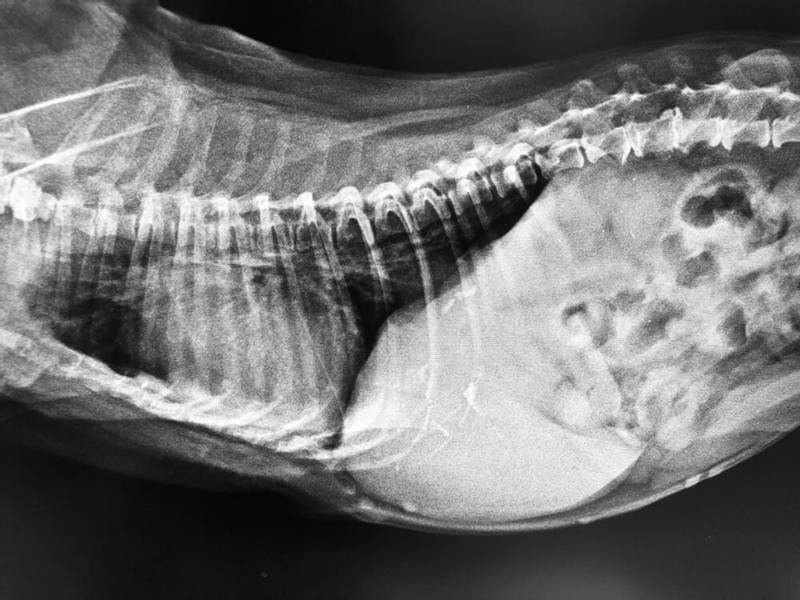
Additionally, studies such as biopsy, portography, and blood clotting may be required.
Liver Treatment in Dogs
For any disease, therapy should be comprehensive and include several factors. As we said earlier, the liver is an organ with many functions, liver diseases have a significant variety, not to mention the fact that they are often a complication of another disease. Therefore, the treatment of a diseased liver in a dog can vary greatly depending on the cause of the disease, the severity of the symptoms, age, and other factors. Treatment may include the following measures and groups of drugs:
Antispasmodics and painkillers;
Droppers. Often, liver diseases are accompanied by dehydration, intoxication, electrolyte disturbances. Intravenous infusions contribute to the normalization of these indicators, and recovery is faster;
Antidotes. When poisoning with known substances, antidotes can be used to quickly neutralize poisons and toxins;
Antibiotics / antimicrobials. With infections and invasions;
Hepatoprotectors. This is a group of drugs that have a positive effect on the restoration of liver cells;
Diet. During the period of illness, you need to transfer the pet to a specialized dietary food (specialized food or an individual diet compiled by a doctor). The feed should be easily digestible, not burden the liver, contain a sufficient amount of antioxidants, vitamins, protein;
Antihelminthic drugs;
Antiemetic drugs. With vomiting or nausea;
Enterosorbents. With diarrhea and poisoning. They bind many toxic substances in the intestines. Thus, they are safely excreted from the body with feces;
Some pathologies require surgical intervention. For example, with bulky tumors or shunts.
Prevention
In order to prevent liver disease in a pet, you need to follow only three simple rules:
Balanced, complete diet;
Timely preventive measures (vaccination, treatment for parasites);
Clinical examination (can be combined with annual vaccination).
Let’s talk about each point in more detail.
Diet
You can feed your pet industrial complete food. The main thing is to choose the type of product that suits him. As a rule, there is information on the label that will help with this. For example, food for miniature breeds up to 6 years old or food for adult dogs with high activity, etc.
If you are an adherent of home diets, then you need to approach its compilation correctly. Do not give your pet products from the table (cookies, sweets, fried, salty, etc.).
The protein source is the most important part of the diet. It should be easily digestible and complete, it should be enough. You can use turkey meat, chicken, beef, organ meats (just be careful with the liver, it should be given very carefully and rarely, because of the excess of vitamin A in it). Essential fatty acids (found in vegetable oils and fatty fish) must be added to the diet, and carbohydrates (cereals, vegetables) are needed for normal bowel function. To draw up optimal proportions, it is better to contact a veterinary nutritionist. You can even do this online – in the Petstory mobile application. You can download it from the link.
Vaccination
Diseases such as leptospirosis, canine viral hepatitis, affect the liver. The good news is that vaccines have long been available for these infections.
All pets should be vaccinated, even if they don’t go outside or if you don’t allow other dogs to approach your pet while walking. The fact is that you can bring many infections home on clothes or shoes, and for infection (for example, parvovirus enteritis of dogs) it is not at all necessary to contact directly with an infected person, contact with his excrement is enough, which is very possible when sniffing the ground. If you often walk with your pet in the field or in the forest or hunt with him, then vaccination against leptospirosis should be given special attention.
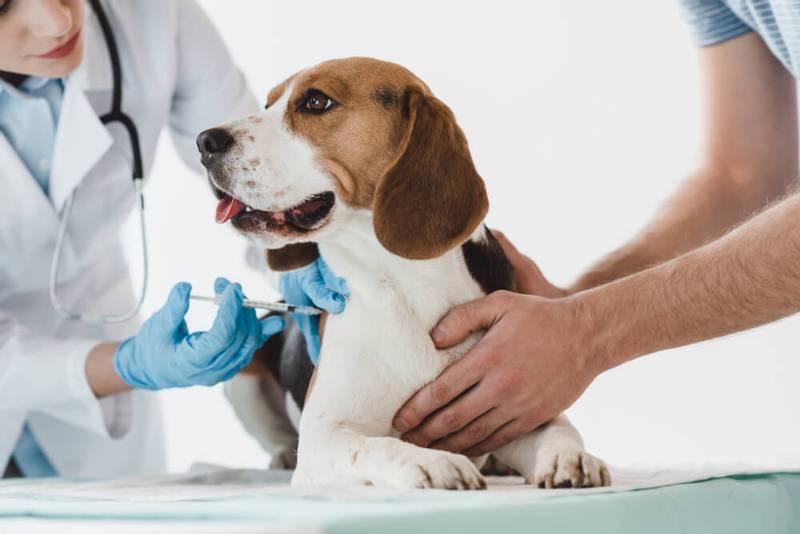
Vaccinations should be done once a year. This is a low-cost way to avoid many health problems in the future.
Parasite treatment
With the treatment of parasites, the situation is the same as with vaccination. It does not take any special effort to create a new life inside the pet. He can just sniff or lick the unfortunate pebble (or not a pebble), and after a couple of weeks he will be excreting parasite eggs everywhere, including your house.
Flea and tick treatment is just as important. Fleas carry certain types of worms, and ticks cause vector-borne diseases that affect many organs, including the liver.
Treatment from helminths should be carried out for prophylactic purposes once every 3 months (for puppies up to a year, once a month and a half). From external parasites, you need to treat your pet throughout the entire time when the air temperature outside is above zero.
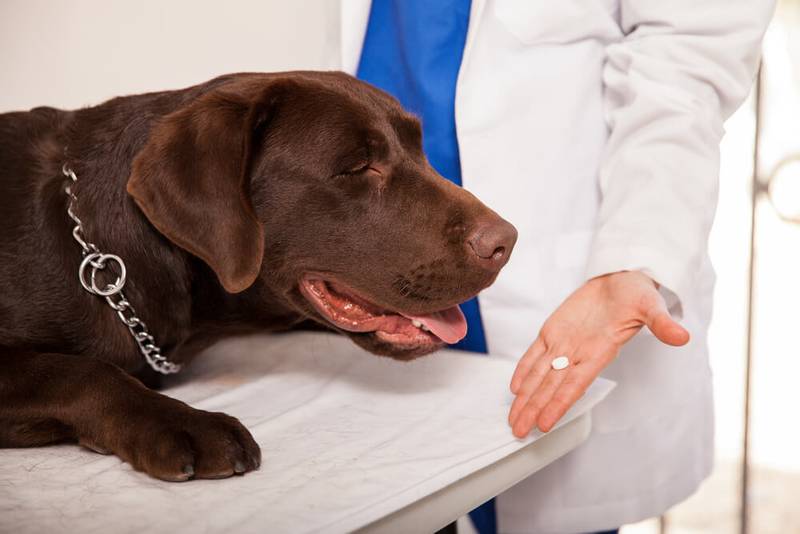
Clinical examination
Not all liver pathologies can be detected in time by external examination or symptoms. As we have already said, symptoms can be hidden for a long time or appear very rarely. Therefore, it is important to periodically check the health of the pet with a veterinarian. For young dogs up to 6 years of age, routine check-ups and routine blood tests once every 1-2 years are sufficient. For dogs older than 6-8 years, it is advisable to conduct an additional ultrasound of the abdominal cavity once a year, since with age there is a risk of degenerative changes in the liver and neoplasms, and if they are detected in time, then the treatment will take a minimum of time, money and nerves.
The article is not a call to action!
For a more detailed study of the problem, we recommend contacting a specialist.
Ask the vet
February 15 2021
Updated: 1 March 2021



